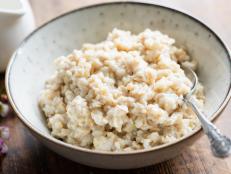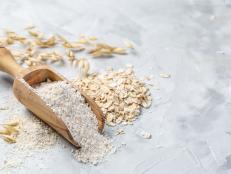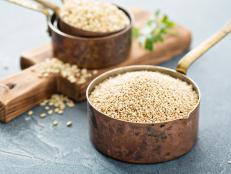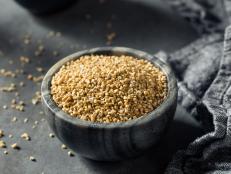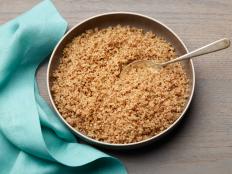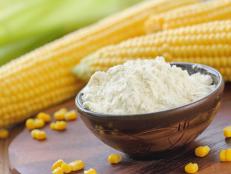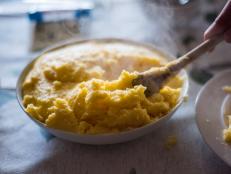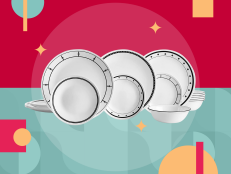How to Cook Farro
Three different ways to cook the ancient grain.
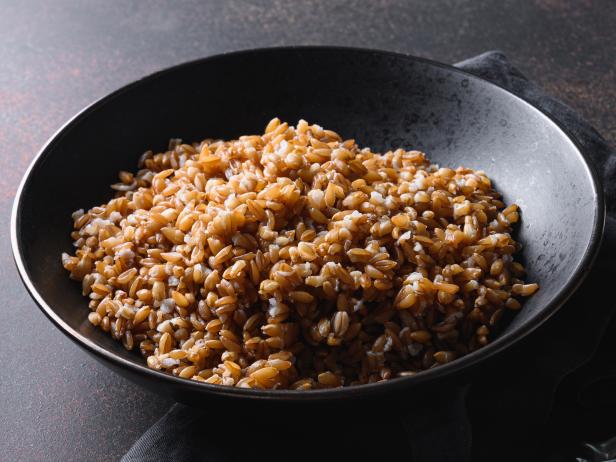
Svetlana-Cherruty/Getty Images
By Fraya Berg for Food Network Kitchen
Fraya is a chef and a contributing writer at Food Network.
Ahhh… ancient grains. Chances are, you’ve heard of them one or two times. Farro is a variety that’s widely available at supermarkets; similar to barley, it has a mild nutty flavor and pleasantly chewy texture. Here, more info on farro, including how to prep it for cooking and three different ways to cook it.

bhofack2/Getty Images
What Is Farro?
Farro (also known as emmer wheat) is a grain in the wheat family, one of the first grains cultivated on a regular basis in Africa and Europe. In ancient Rome, farro was ground into flour and rationed to soldiers daily. While it was never completely abandoned, farro has been brought back to the table as a whole grain. In the recent past, it was typically just seen on restaurant menus, but it’s now commonly available and home cooks are using it in approachable recipes. If you’re a fan of barley, farro is an easy leap. Or another simple analogy? Brown rice with nutty flavor and chewier texture. It can be used very similarly to brown rice - in cold salads, as a warm side dish, in soups, as a stuffing or fried up.
Nutritional Benefits of Farro
Farro is a low-fat, high-fiber, nutrient-dense grain. It's a good source of vitamins A and E, magnesium and iron. A one-cup serving of farro has 220 calories, 2 grams of fat, 47 grams of carbohydrates, 8 grams of protein and 6 grams of fiber. It’s also a good source of vitamin B3 and zinc. For more info on what makes farro so healthy, head over to the story Meet This Grain: Farro by Dana Angelo White, M.S., R.D., A.T.C.
Whole Farro vs. Semi-Pearled Farro vs. Pearled Farro
You might see several varieties of farro at the supermarket, and here’s the difference between them. Whole farro is the entire grain, completely encased in the bran. Semi-pearled farro is processed to remove some of the bran and pearled farro has all the bran removed. Bran is the tough coating of the grain, a good source of fiber, protein and fat. Bran-on types of farro take longer to cook unless you soften the brain by soaking it in water overnight in the fridge. Pearled farro has all the bran removed and doesn’t need to be soaked.
Steps to Take Before Cooking Farro
Farro can be cooked like rice or like pasta – easy as can be. But before you get cooking, here are a few things you should do to prep your farro.
Rinse Farro
No matter which cooking method you choose when cooking farro, the first step is to rinse it to remove any dust remaining after processing. Farro itself doesn’t get gummy or sticky when cooked, even if it’s cooked longer than necessary. However, the dust left in the grain during processing can be a culprit. Use a fine strainer and rinse the farro under cold water. There won’t be nearly as much dust as you’ll find in rice, so the water will run clear much more quickly.
Soak Farro
As we've already discussed, soaking whole farro or semi-pearled farro will speed up the cooking time significantly - although it's not necessary. If you have the forethought, add the farro to a bowl of water and soak it overnight in the refrigerator.
Toast Farro
Toasting isn’t a step included in most recipes because it’s not required. It will, however, add an even nuttier flavor to the grain. But: you can’t toast farro right after you’ve rinsed or soaked it. Absorb as much water as possible by setting the strainer with the rinsed farro on a triple layer of paper towels. After you’ve done this, put the farro and a teaspoon of oil in the pot you’ll be cooking it in and toast over medium heat until it just begins to smell nutty, 4 to 6 minutes. If the farro is still pretty wet, it will take longer to toast.
Farro to Water Ratio
If you’re cooking farro on the stovetop, the water to farro ratio doesn’t matter because we recommend using the pasta method: boiling farro in a large amount of salted water, then straining it once it’s done cooking. However, if you’re cooking it in the oven or in a slow cooker, follow this rule of thumb: 3 parts cooking liquid to 1 part farro.
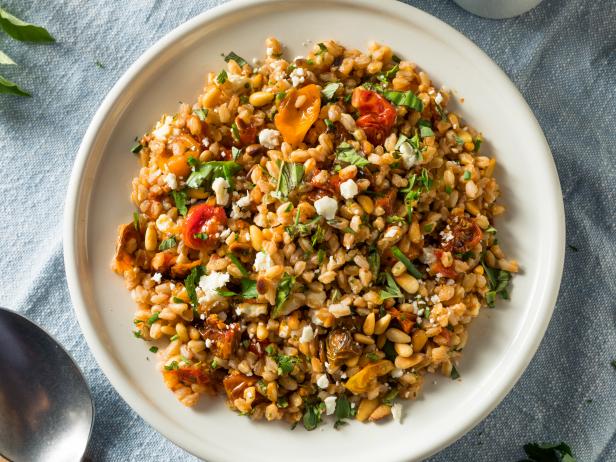
bhofack2/Getty Images
How to Cook Farro on the Stove
Any grain can be cooked in a large amount of salted water the same way pasta is cooked. It’s like cooking rice with the pasta method. We've got lots of info on cooking rice in our article How to Cook Rice: A Step-by-Step Guide. Fact: farro is much easier to cook than rice because it's so forgiving – it won't overcook and get mushy.
- Rinse the farro. Toast dry farro in a skillet if you want to add nutty flavor.
- Fill a pot with water (no need to measure) and salt it — just like you do with pasta water. Bring it to a boil and then carefully add the farro.
- Bring the water back to a boil, then lower the heat so it maintains a fast simmer.
- Simmer uncovered, stirring occasionally until the farro is softened through, 20 to 40 minutes, depending on whether it’s pearled or whole farro. Unlike rice, farro won’t get mushy if it’s a bit overcooked.
- Drain the farro in a fine mesh strainer.
How to Cook Farro In the Oven
Cooking farro in the oven is a set it and forget it method, but faster than a slow cooker. When making a pilaf, the farro is cooked with vegetables and aromatics that become part of the dish, as opposed to the pasta method, when it’s drained.
- Preheat oven to 350 degrees F. Bring a salted pot of water to a boil. Here, the ratio matters a little more than the stovetop method; use 3 parts water to 1 part farro.
- Rinse and drain farro.
- Put the farro in a Dutch oven and add salt and a teaspoon or two of oil; toast if desired.
- Add boiling water, stir, bring to a simmer on the stove, cover and transfer to the oven.
- Cook until the farro is soft and chewy, 30 to 45 minutes.
How to Cook Farro In a Slow Cooker
Cooking farro in a slow cooker is even easier than cooking farro in an oven. It’s as simple as dump and stir. Farro cooked in a slow cooker can be used in any salad recipe or as a side dish; it can even be added to a soup.
- Put rinsed farro (toasted if you like it that way) in a slow cooker.
- Add salt and a bit of butter or oil.
- Add water or broth in a 3 to 1 ratio of water to farro.
- Cover, cook on high 2 to 4 hours, until farro is soft and chewy. Drain if there is any leftover liquid (or add the cooking liquid to soup so the starches thicken it).
Farro Recipes
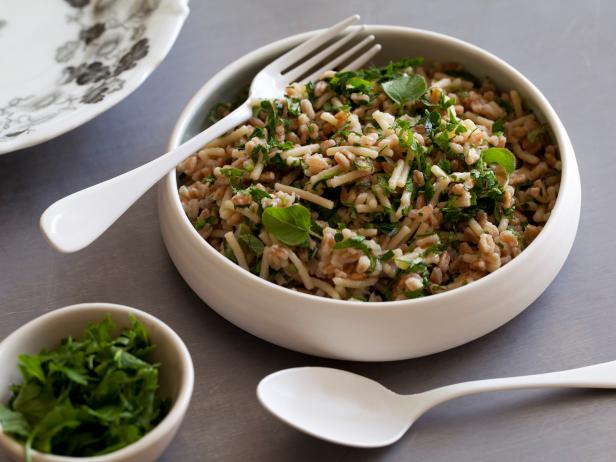
Like any pilaf, the farro is cooked in just the right amount of liquid, no draining required. This version leans on pasta in addition to farro.

Farro is the base for this one-pot dish that gets its Mediterranean cred from feta cheese, kalamata olives, lemon and sundried tomatoes.

Stephen Johnson, 2014, Television Food Network, G.P. All Rights Reserved
Here, a classic fried rice recipe with veggies, ginger, garlic, soy sauce and sesame oil – except there’s no rice. Farro is the perfect flavorful, chewy stand-in.
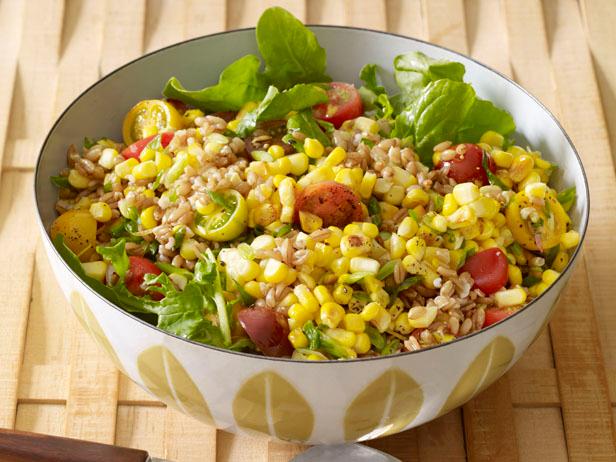
Kana Okada, 2012, Kana Okada
When farro is perfectly cooked it has a consistency similar to corn, so they’re the perfect pair in our Farro and Corn Salad.
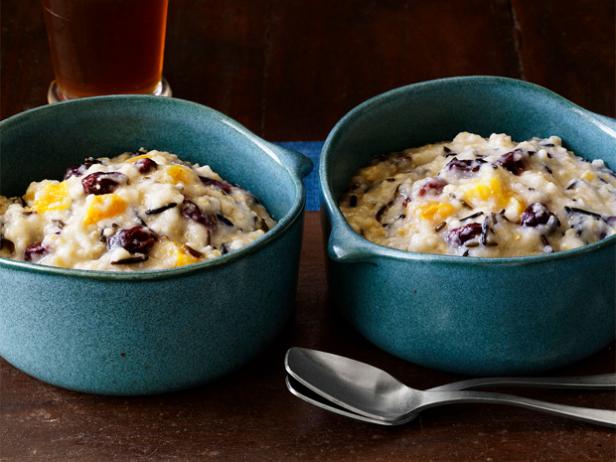
Farro, steel cut oats, farina and wild rice come together in a slow cooker that you can turn on when you go to bed and wake up to grainy goodness.
Related Links:






















